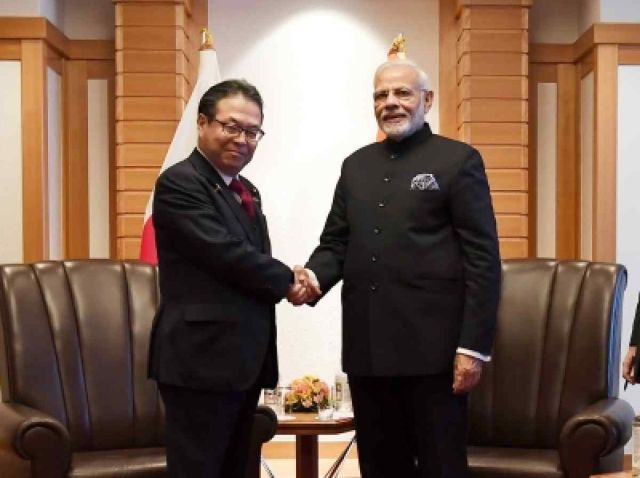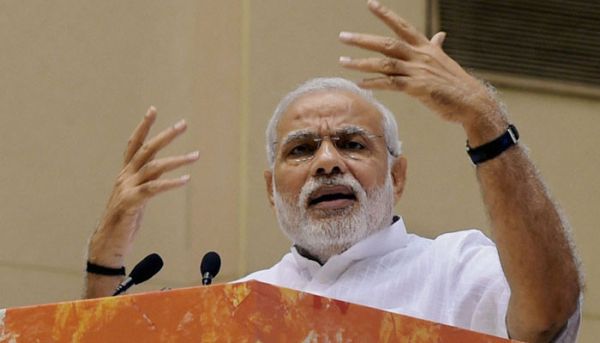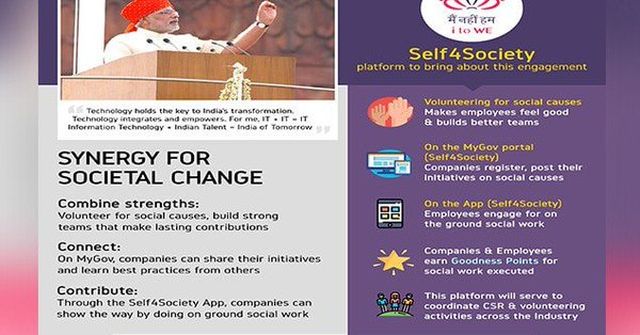
by Editor | May 25, 2021 | News, Politics
 By Aroonim Bhuyan,
By Aroonim Bhuyan,
New Delhi : With India’s northeastern region being a pivot area of New Delhi’s Act East Policy, its importance again came into focus during Prime Minister Narendra Modi’s annual bilateral summit with his Japanese counterpart Shinzo Abe in Tokyo on October on 28-29.
With Modi describing Japan as the cornerstone of India’s Act East Policy and the two countries agreeing to work together in more concrete terms for the development of the Indo-Pacific region, the Northeast has emerged as a key link in this chain.
The Indo-Pacific region stretches from the east coast of Japan to the east coast of Africa and both India and Japan agree that the 10-nation Association of Southeast Asian Nations (Asean) regional bloc has to play a central role for the peace and prosperity of the region.
According to an India-Japan Vision Statement issued following the Tokyo summit, both Modi and Abe “reiterated their unwavering commitment to working together towards a free and open Indo-Pacific.
“The two leaders also affirmed that Asean unity and centrality are at the heart of the Indo-Pacific concept, which is inclusive and open to all,” it stated.
Under the Act East Policy, the Northeast, which shares historical and traditional bonds with the Asean region, is seen as the springboard for India’s increasing engagements with Southeast Asia and for this New Delhi has roped in Tokyo in a big way.
Japan’s role in development work in the Northeast is also expected to boost connectivity between the member-states of the Bimstec sub-regional grouping.
The Bay of Bengal Initiative for Multi-Sectoral Technical and Economic Cooperation (Bimstec), which came into existence in 1997, comprises seven countries lying in the littoral and adjacent areas of the Bay of Bengal — Bangladesh, Bhutan, India, Myanmar, Nepal, Sri Lanka and Thailand.
Membership in the bloc allows India to engage more with the extended neighbourhood in Southeast Asia under New Delhi’s Neighbourhood First Policy via northeastern India.
This will also help keep in check China’s growing influence in the region through Chinese President Xi Jinping’s pet Belt and Road Initiative (BRI) project.
India has not joined the BRI on the grounds that it has put participating nations in debt traps and also does not respect the territorial integrity of other countries.
Last year, India and Japan established the Act East Forum to serve as a driving force for cooperation between the two countries in the Northeast and the second meeting of the Forum was held on October 8 in which key infrastructure projects, including road development, in the region were identified.
“The two Prime Ministers welcomed the progress made for the development of India’s northeastern region through the India-Japan Act East Forum by identifying and implementing projects for enhancing connectivity, sustainable forest and ecological management, disaster risk reduction and people-to-people exchanges,” the Vision Statement said.
At an interaction organised by the New Delhi-based think tank Brookings India ahead of Modi’s visit to Japan, Japanese Ambassador Kenji Hiramatsu referred to a statement by Modi that Japan is the only country with which India will partner on the connectivity agenda.
Hiramatsu said that India and Japan can not only contribute to some infrastructure project in the Pacific, his country is also keen to support development work in the northeastern part of India.
He said that the Act East Forum was set up to discuss how Japan and India can collaborate together in many areas, including infrastructure, people-to-people exchange and disaster management in the Northeast.
He also mentioned some of the key infrastructure projects in the region identified during the second meeting of the Act East Forum.
These include National Highway 40 between and Shillong and Dawki, National Highway 51 between Tura and Dalu — both in Meghalaya — and National Highway 54 between Aizawl and Tuipang in Mizoram.
The possibility of a corridor linking Gelephu, the border area between Assam and Bhutan, and Dalu, the border town between Bangladesh and Meghalaya, in collaboration with the Asian Development Bank (ADB) is also being explored.
This will include the Dhubri-Phulbari bridge project, which will be the longest river bridge in India when completed, as the third phase of the Northeast Road Network Connectivity Improvement Project.
Development of main district roads (MDRs) and other district roads (ODRs), which will have positive socio-economic effect, is also being considered.
“We are very happy to have connectivity projects together in the Northeast to eventually connect with neighbouring countries like Myanmar or Bangladesh,” Hiramatsu said at the interaction.
Disaster management is another area of cooperation India and Japan are discussing and Hiramatsu said that his country has a lot of experience to share with the Northeast, a region that is prone to floods and earthquakes.
The October 8 Act East Forum meeting decided to expedite Japan’s contribution to resilient infrastructures in the Northeast and through capacity development project on highways in the mountainous regions.
Both sides are also discussing knowledge sharing on the issue through a Japan-India workshop on disaster risk reduction.
Following the October 29 summit in Tokyo, India and Japan also exchanged notes on seven yen loan agreements for key infrastructure projects in India, including two in the Northeast — renovation and modernisation of the Umiam-Umtru Stage-III hydroelectric power station in Meghalaya, and sustainable catchment forest management in Tripura.
Biodiversity conservation and forest management projects in Nagaland and Sikkim are also under consideration.
People-to-people ties also form a key aspect in Japan’s engagement with northeastern India and for this it has been decided to promote Japanese language education in the Northeast.
Gauhati University and Cotton University in Assam, English and Foreign Languages University in Meghalaya, and the National Institute of Technology in Nagaland have expressed interest in this.
(Aroonim Bhuyan can be contacted at aroonim.b@ians.in)
—IANS

by Editor | May 25, 2021 | Economy, News, Opinions
 By Amit Kapoor,
By Amit Kapoor,
The 2019 general election is now just months away. This means that the time for any significant change on the ground has passed as the government will soon get into campaign mode.
However, as is often the case just before an Indian election, matters of economic concern are gaining importance in national conversations. The rupee is plummeting, banking and financial institutions are in the news for all the wrong reasons, and domestic investment sentiment is ominously subdued. At the same time, foreign investors are taking money out of the economy and running like rats deserting a sinking ship.
When Prime Minister Narendra Modi came to power in 2014, nothing helped him more than the precarious state of the economy at the time. Today, even though the economy is in much better shape with stronger growth and higher foreign exchange reserves, the same old problems are coming back to threaten the incumbent. The economy is currently under threat from a mix of international and domestic factors, most of which were issues before the previous election as well.
On the global front, three major factors are fuelling India’s current economic problems: Rise in US interest rates, the rising oil prices and a growing sense of trade protectionism around the world, resulting in a trade war that is making global investors jittery. Of the three, the first two were pertinent issues in 2013-14 as well.
The first hint of US winding down its tight monetary policy had led to a flight of capital out of emerging economies. Until mid-October, foreign institutional investors had withdrawn a whopping Rs 90,000 crore from India’s capital markets. The country has accumulated a huge pool of reserves to deal with the issue since it was caught unawares in 2013, but clearly it was not enough to stem the slide of the rupee, which has fallen by over 14 percent in this calendar year.
Meanwhile, an issue that will have maximum bearing on voters is the rising oil prices. Global crude oil prices have risen by 24 percent since April this year, after the Organisation of Petroleum Exporting Countries (OPEC) decided to cut production. Such an escalation, combined with a sliding rupee, has resulted in a double whammy for India. A rise in the price of a barrel of oil by one dollar raises the country’s import bill by Rs 823 crore. This has resulted in the widening of the current account deficit (CAD) to 2.4 percent of the GDP in the first quarter.
Another factor with a strong bearing on the fortunes of the Indian economy is the developing trade war between the two largest economies in the world. As the US and China impose newer and higher tariffs on imports into their countries to get back at each other, India plans to introduce higher tariffs on US imports from November in response to the latter’s import tariffs on aluminium and steel. India needs to be careful not to aggravate the situation for itself by getting caught in this cross-fire. In 2017-18, India exported almost double what it imported from the US and it would be an unnecessary burden on the CAD if the equation changed.
On the domestic front, the situation seems to be no better. When Modi came to power, one of the biggest expectations was that the so-called “animal spirits” in the economy would receive a significant push by reviving muted investor sentiments. But in March 2018, investment accounted for merely 30.8 percent of India’s nominal GDP. To put matters in perspective, the average investment between June 2004 and March 2018 has averaged at about 35 percent. In fact, CMIE (Centre for Monitoring Indian Economy) data shows that, for the first time, the value of new projects announced by private players in this quarter is lower than those announced by the public sector.
Another domestic problem is one which had developed much before the BJP government came into power. The country’s banking sector remains burdened by bad loans. Despite the best efforts with loan resolutions through the National Company Law Tribunal (NCLT), Indian state-owned banks had to write off over Rs 300,000 crores between April 2014 and April 2018 as per RBI data. The private banking sector has had its fair share of troubles as well with the top management at ICICI Bank and Yes Bank finding itself mired in controversies.
To make matters worse, more recently, non-banking financial institutions were added to the list after India’s leading infrastructure finance company, Infrastructure Leasing & Finance Services (IL&FS), defaulted on its interest payments, triggering panic in the markets. The collapse of IL&FS is expected to further adversely impact the credit extended to productive sectors.
The only solace for the economy — that it is growing at an impressive eight per cent — is also misleading: An economy recovering from the twin shocks of demonetisation and GST is bound to inflate growth as it slides into normalcy. With no green shoots in sight, there are no straightforward solutions to the country’s economic situation. India is in dire need of a long-term growth strategy; one that can’t fit into weekly columns. But, instead, it is fire-fighting its way out of one crisis after another; or rather, from one election to the next.
(Amit Kapoor is chair, Institute for Competitiveness. The views expressed are personal. He can be contacted at amit.kapoor@competitiveness.in and tweets @kautiliya. Chirag Yadav, senior researcher, Institute for Competitiveness, has contributed to the article)
—IANS

by Editor | May 25, 2021 | Business, Corporate, Corporate Governance, Economy, Investing, Medium Enterprise, News, Politics, SMEs
 Tokyo : Prime Minister Narendra Modi on Monday invited Japanese businessmen to engage more with India to speed up the investment process in New Delhi.
Tokyo : Prime Minister Narendra Modi on Monday invited Japanese businessmen to engage more with India to speed up the investment process in New Delhi.
“I always talk about ‘strong India strong Japan’. On this occasion, I express my gratitude towards Japanese businessmen to show their faith in India. I invite you all to engage with India to speed up investment process there,” Modi said while interacting at the Business Forum Summit here.
Modi, who arrived here on Saturday for his annual bilateral summit with his Japanese counterpart Shinzo Abe, said: “Some years ago, I spoke about making a mini-Japan in India. It’s a matter of great happiness for me that today, you are working in an even larger number in India.”
The Indian Prime Minister thanked the Japanese government and companies, saying: “Our Delhi-Mumbai industrial corridor project is also moving forward,” because of Japan’s collaboration with India.
He said that under the ‘Make in India’ initiative, India has the potential to become a manufacturing hub.
“I have always kept ease of doing business as my priority. India was at 140th position in the ‘ease of doing business’ ranking of the World Bank when he took over the responsibility of the government in 2014. Now India has reached 100th position and we are working towards better ranking,” Modi added.
This is Modi’s third visit to Japan for the summit and his 12th meeting with Abe since 2014.
—IANS

by Editor | May 25, 2021 | News, Politics
 New Delhi : Prime Minister Narendra Modi on Sunday said that only refraining from war cannot ensure peace. Instead, there is a need for “united universal cooperation” to combat terrorism, climate change and for economic development and social justice.
New Delhi : Prime Minister Narendra Modi on Sunday said that only refraining from war cannot ensure peace. Instead, there is a need for “united universal cooperation” to combat terrorism, climate change and for economic development and social justice.
Modi made the remarks in his monthly radio programme “Mann Ki Baat”, ahead of November 11 – the day when World War I ended a hundred years ago.
Modi said India had no direct connection with the War but it was an important event because Indian soldiers fought bravely and sacrificed their lives.
“The world witnessed a dance of death and devastation during the World War I. Around one crore soldiers and almost the same number of civilians lost their lives. This made the whole world realise and understand the importance of peace.
“The definition of peace has changed in the last hundred years.
“Today, peace does not only mean ‘no war’. There is a need to work unitedly to address issues such as terrorism, climate change, economic development to social justice through universal cooperation and co-ordination. Development of the poorest of the poor is the real indicator of peace,” Modi said.
On climate change, the Prime Minister said people only have to look back at the glorious past and the rich traditions for remedial action and have to understand the lifestyle of the tribal communities who live in consonance and in close coordination with nature.
“The tribal community believes in very peaceful and harmonious co-existence but if somebody tries to harm and cause damage to their natural resources, they do not shy away from fighting for their rights,” he said.
Modi cited the example of Gurbachan Singh, a farmer from Punjab who during the marriage of his son, told the bride’s father to promise him not to burn stubble in their fields.
He mentioned about the farmers of Punjab’s Kallar Majra who are mixing the stubble with the soil by ploughing their fields rather than burning. “A small constructive step plays a vital role in creating a positive environment.”
Modi recalled Sardar Vallabhbhai Patel’s contribution in keeping India united and said the nation will pay him tributes on his birth anniversary on October 31 by inaugurating his world’s tallest skyscraping statue.
Lauding the performances of Indian sportspersons in the Asian Para Games and Summer Youth Olympics, he said the country was setting new records not just in the field of sports but also in “uncharted areas” and stressed on the “4S” — spirit, strength, skill and stamina — as key elements in the field of sports as the core foundation of the nation.
Recalling the successful organisation of the FIFA Under-17 World Cup in 2017, Modi said India was hosting the Men’s Hockey World Cup 2018 in Bhubaneswar between November 28 and December 16.
Mentioning about ‘Self 4 Society’ portal which has been launched with a view to motivate employees of IT companies for social activities, Modi said their dedication and vigour can make every Indian feel proud.
The Prime Minister congratulated Sikkim for winning the prestigious Future Policy Gold Award, 2018 for encouraging the sustainable food system and said the northeast region has made grand progress in organic farming.
—IANS

by Editor | May 25, 2021 | Branding, Corporate, Corporate Governance, Markets, Networking, News, Online Marketing, Politics, Social Media, Technology
 New Delhi : Prime Minister Narendra Modi will launch a Corporate Social Responsibility (CSR) platform and address a townhall of IT and electronic manufacturing professionals on October 24.
New Delhi : Prime Minister Narendra Modi will launch a Corporate Social Responsibility (CSR) platform and address a townhall of IT and electronic manufacturing professionals on October 24.
Modi tweeted this on Friday addressing all Indian technocrats who would be joining him for the townhall for a discussion on the ways through which a vibrant IT and electronic manufacturing sector could undertake initiatives and volunteer to contribute building a New India.
The Ministry of Electronics and IT stated the CSR platform would help IT and electronic professionals to share their stories.
—IANS





